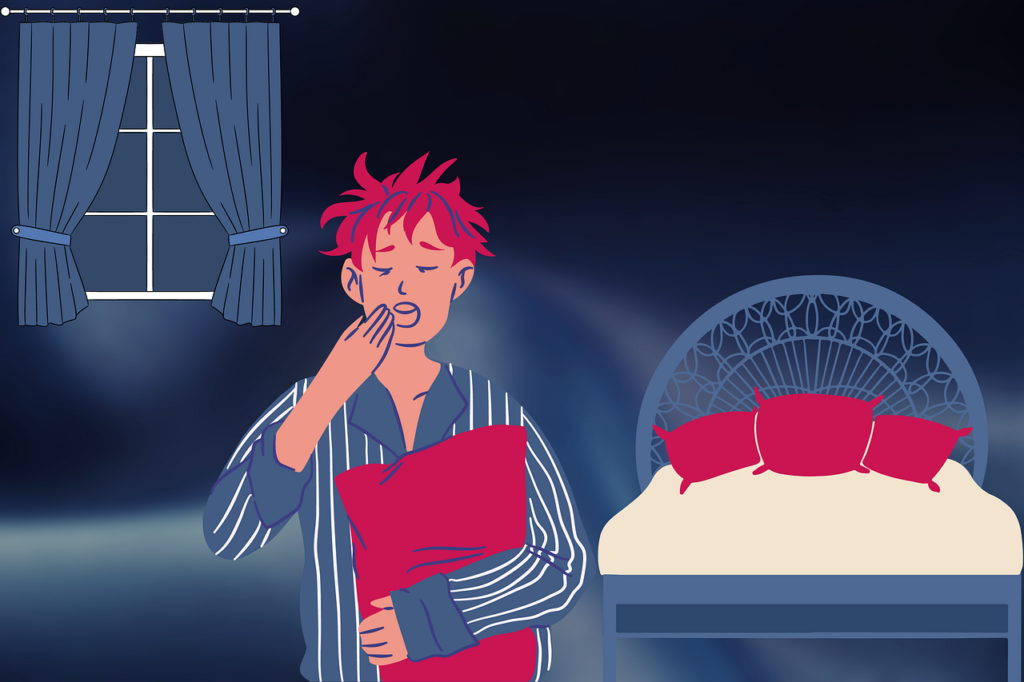SPOILER ALERT!
~ REM is a dream state
~ Getting good REM sleep after a fearful or traumatic experience helps you feel less traumatized the next day.
~ Not enough REM sleep is one causal factor for PTSD
~ Too much of REM sleep is one causal factor in MDD
Findings about the function of Rapid Eye Movement (REM), which is the dream stage in sleep, suggest that it modulates fear memories. Specifically, there is evidence that after a good night sleep, individuals who experienced a fearful event display a more adaptive fear response the next day.
REM Sleep and Fear Control
This means that instead of automatically responding with fear when faced with a similar fearful situation, they were able to monitor their reaction and inhibit their fear when it was inappropriate. Further support for this function of REM sleep comes from reports that anxious patients who underwent exposure therapy showed greater reduction in anxiety and negative emotions when they slept immediately after the therapy compared to those who slept later.
A reduction of fear and anxiety after REM sleep is particularly pertinent in the etiology (i.e., study of the causes of a disease) of certain psychiatric disorders, especially post-traumatic stress disorder (PTSD) and major depressive disorder (MDD), which are characterized by abnormal REM sleep patterns and excessive fear and negative emotions.
REM Sleep in PTSD
Typically individuals with post-traumatic stress disorder (PTSD) spend less time in REM sleep, and they experience poor quality of sleep. For example, data show that they wake up often due to a sudden increase in adrenalin, which reflects heightened activity of the sympathetic nervous system (i.e., the branch of the nervous system that mobilizes the body for action).
Conversely, sleep disturbances after a trauma and heightened sympathetic activity during REM sleep are linked with an increased risk of developing PTSD later.
Furthermore, heightened sympathetic arousal has been linked with exaggerated activity in the locus coeruleus among patients with PTSD compared to participants without a psychiatric disorder.
The locus coeruleus is a brain structure involved in the physiological expression of panic and stress through the release of noradrenaline ( i.e., a chemical that increases alertness, constrict blood vessels, and affect mood and memory). For example, individuals with PTSD exhibit higher levels of noradrenaline metabolite in their morning urine, which signals that there was no normal overnight reduction.
In addition, PTSD patients display elevated concentration of noradrenaline in their cerebrospinal fluid (i.e., the fluid that bathes the brain and provides its nutrients) after sleep, which is an index of symptom severity.
REM in MDD
By contrast individuals with major depressive disorder (MDD) display excessive REM sleep. Specifically, they enter into REM sleep faster than healthy individuals, have a more intense REM response, and they spend a longer time in REM.
Relatedly, reports that MDD patients typically exhibit deficiencies in noradrenaline suggest decreased activity of the locus coeruleus. Indeed, the activity of the locus coeruleus is normally suppressed during REM sleep, which coincides with decreased release of noradrenaline. As they spend more time in REM, concentration of noradrenaline is significantly reduced.
As a result of low noradrenaline levels (remember that it increases alertness), the activity of the amygdala, an emotion-processing brain region, is no longer efficiently monitored by the medial prefrontal cortex (mPFC), a higher cortical brain structure.
What follows are increased sensitivity to neutral stimuli and indiscriminate emotional reactivity. For example, MDD patients show a strong emotional reaction to positive, neutral and negative images.
Reference:
Goldstein, A. N., & Walker, M. P. (2014). The role of sleep in emotional brain function. Annual review of clinical psychology, 10, 679–708. https://doi.org/10.1146/annurev-clinpsy-032813-153716

